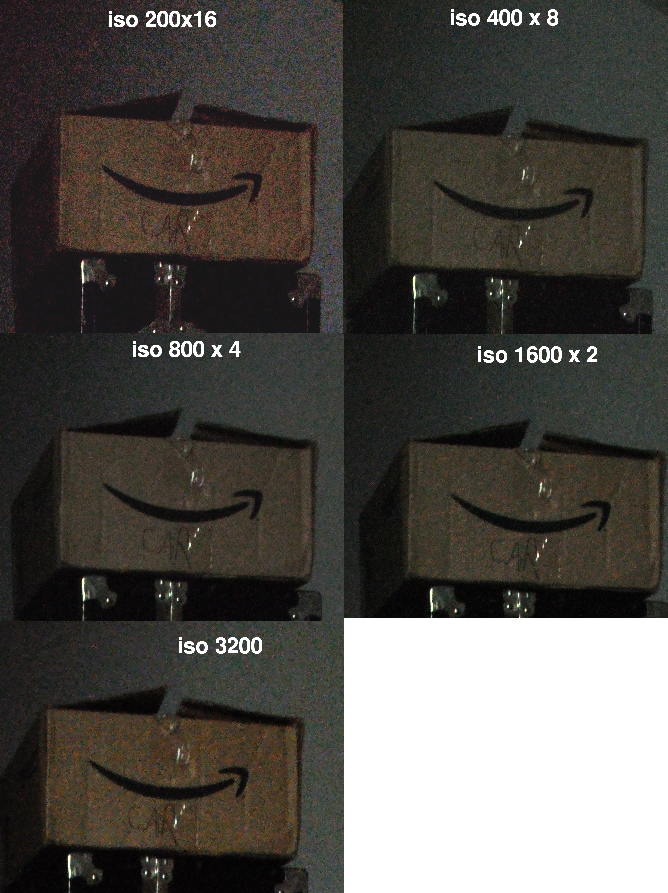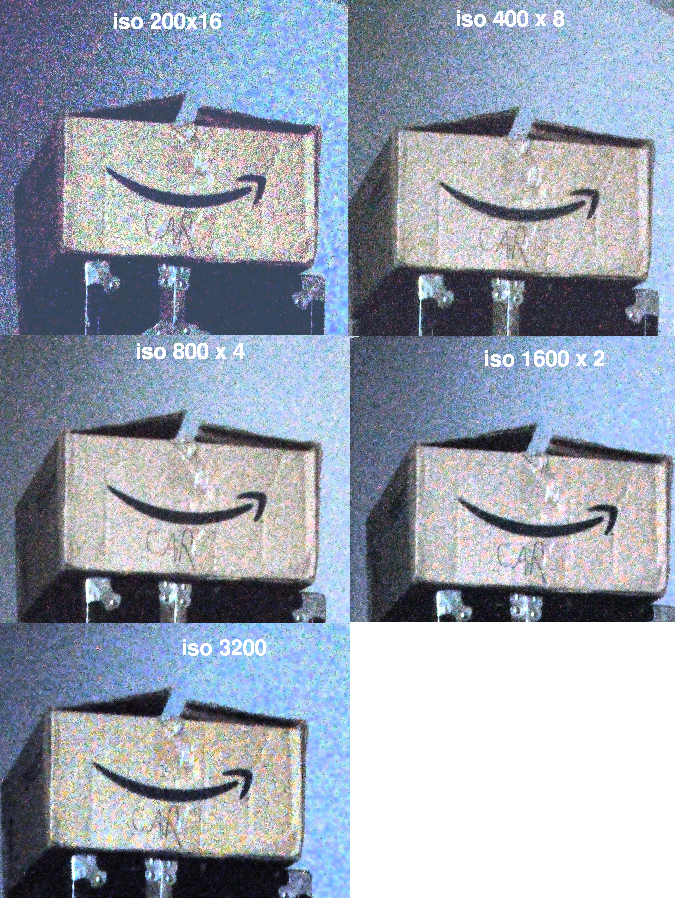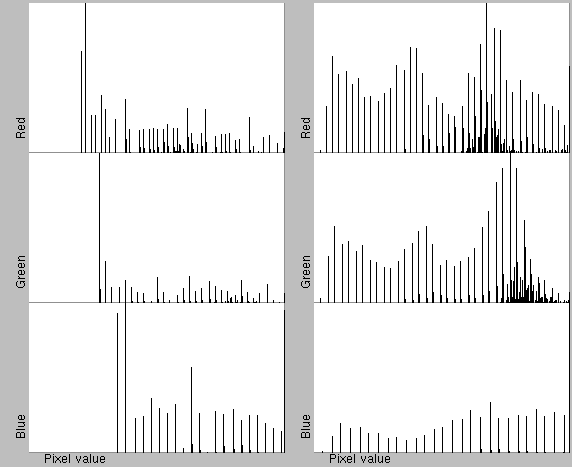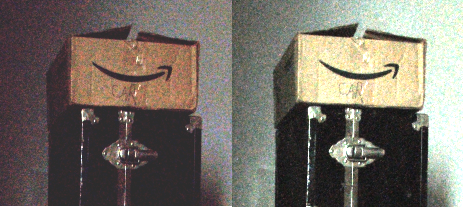Is Low ISO Really Better for Reducing Noise?
 e often hear that a low ISO value in a DSLR camera gives lower noise. But
is this really true? To find out, I shot some photos using a Nikon D90 at
different ISO settings and analyzed them. Following the hallowed tradition
of using idiotically mundane objects as the subject, the shots were of a
cardboard box in a dark closet. (This box contains manuals and spare parts
for my car.) What I found was surprising indeed.
e often hear that a low ISO value in a DSLR camera gives lower noise. But
is this really true? To find out, I shot some photos using a Nikon D90 at
different ISO settings and analyzed them. Following the hallowed tradition
of using idiotically mundane objects as the subject, the shots were of a
cardboard box in a dark closet. (This box contains manuals and spare parts
for my car.) What I found was surprising indeed.
To ensure a fair test, the camera was set to full manual mode. Each image was exposed for one second. All the images were imported as 48-bit color raw (NEF) files. All sharpening and processing in the camera was turned off. I used Nikon's Capture NX2 to convert them to 48-bit TIFFs, analyzed them using Imal, and converted them to 24 bits/pixel for display.
Because ISO in a DSLR is nothing more than an amplifier gain factor, I equalized the images by multiplying the red, green, and blue pixel values of the ISO 1600, 800, 400, and 200 images by 2, 4, 8, and 16, respectively. The originals were dark enough that none of the images were pushed into saturation by this procedure. The results are shown in Fig. 1. Surprisingly, there were color differences as well as noise differences. However, some of these noise differences are illusory. It is necessary to adjust the color to make the RGB histograms identical before the noise can be compared. This was done by multiplying the red, green, and blue by the appropriate factor using the Imal software. The result is shown in Fig. 2.

Fig. 1 Uncorrected images
Findings
Because of the contrast stretching, all the histograms are a series of spikes--that is, the histogram is not smooth. This is to be expected when stretching the contrast of an image from a camera with only a 12-bit ADC. However, there were other unexpected differences.
- The image at 200 ISO had more natural color, but was washed out. This can be seen in Fig. 2 and the histograms in Fig. 3.
- Some of the higher ISO images had a greenish tint. This is evident in Fig. 1, and even more evident in Fig. 4, where binning was applied to the images.
- More detail is visible at ISO 1600 than at ISO 200. This can also be seen in Fig. 4, where the images were 4×4 binned. (The ISO 200 image was also contrast stretched by 4× to make it visible, while the ISO 1600 image was already near saturation after binning, and therefore was not contrast-stretched.)
- In Fig. 2, the printing on the side of the box is clearest at 800 and 1600. Also, the reflection of the Scotch Tape is clearest at 800 and 1600.
- There are subtle differences in noise among the five images, with the intermediate ISOs (800 and 1600) appearing distinctly smoother. Once again, the lowest ISO (200) was the worst.

Fig. 2 Corrected (normalized) images

Fig. 3 Histograms after equalization and correction (Left=200 ISO, Right=1600 ISO)

Fig. 4 Binned images (Left=200 ISO, Right=1600 ISO)
Conclusion
You will always get better (or at least smoother) results if you compensate for low ISO by increasing the exposure time. The more photons that reach the sensor (within reason), the smoother the result. For daylight photography, where you have more than enough photons, this becomes practical, and these problems will be minimal. However, it's also clear from this test that the idea that, for a given exposure time, low ISO per se gives a better signal to noise ratio, is a myth: once you stretch the images to the same brightness, there is very little difference between low and high ISO in terms of noise. If anything, intermediate ISO values give a slightly better result.
In addition, the D90 also seems to be adding a "toe" to the pixel values. When the contrast is stretched, this has a disproportionate effect on low ISO images, causing them to become washed out. This seems to be the main difference among the different exposures. The other difference is a change in the white balance, which is easily corrected in software.
The myth that low ISO gives lower noise seems to have originated from camera reviewers. Some camera review websites show sample photos taken at different ISO values. These reviewers invariably find that high ISO images are noisier. What may not be evident is that their cameras are set to "automatic exposure." They are exposing for a longer time to compensate for the low ISO. So what these tests really show is that the more photons you capture, the smoother your image will be. For astrophotographers, who don't have the luxury of using automatic exposure, it's necessary to set the exposure as long as the tracking and your skyglow will allow. In this case, as shown above, low ISO is sometimes much noisier.
The conclusion is: for the D90, if you are shooting in bright light, lower ISO may be better if you compensate by increasing the exposure time. In low-light conditions (as, for example, in astrophotography), lowest noise is obtained when you use the highest ISO (in this case, 1600) that doesn't push any part of your image into saturation. A good rule of thumb might be to pick the second highest setting that your camera offers.
